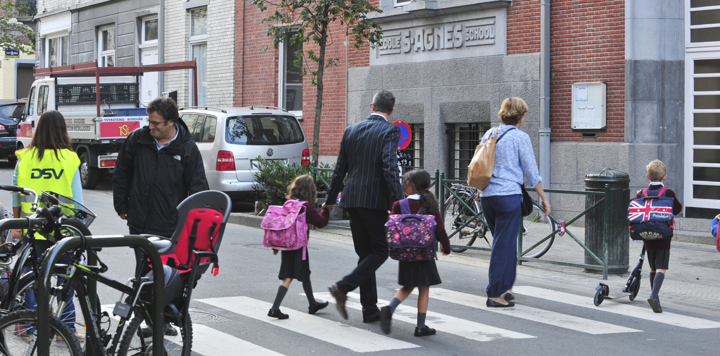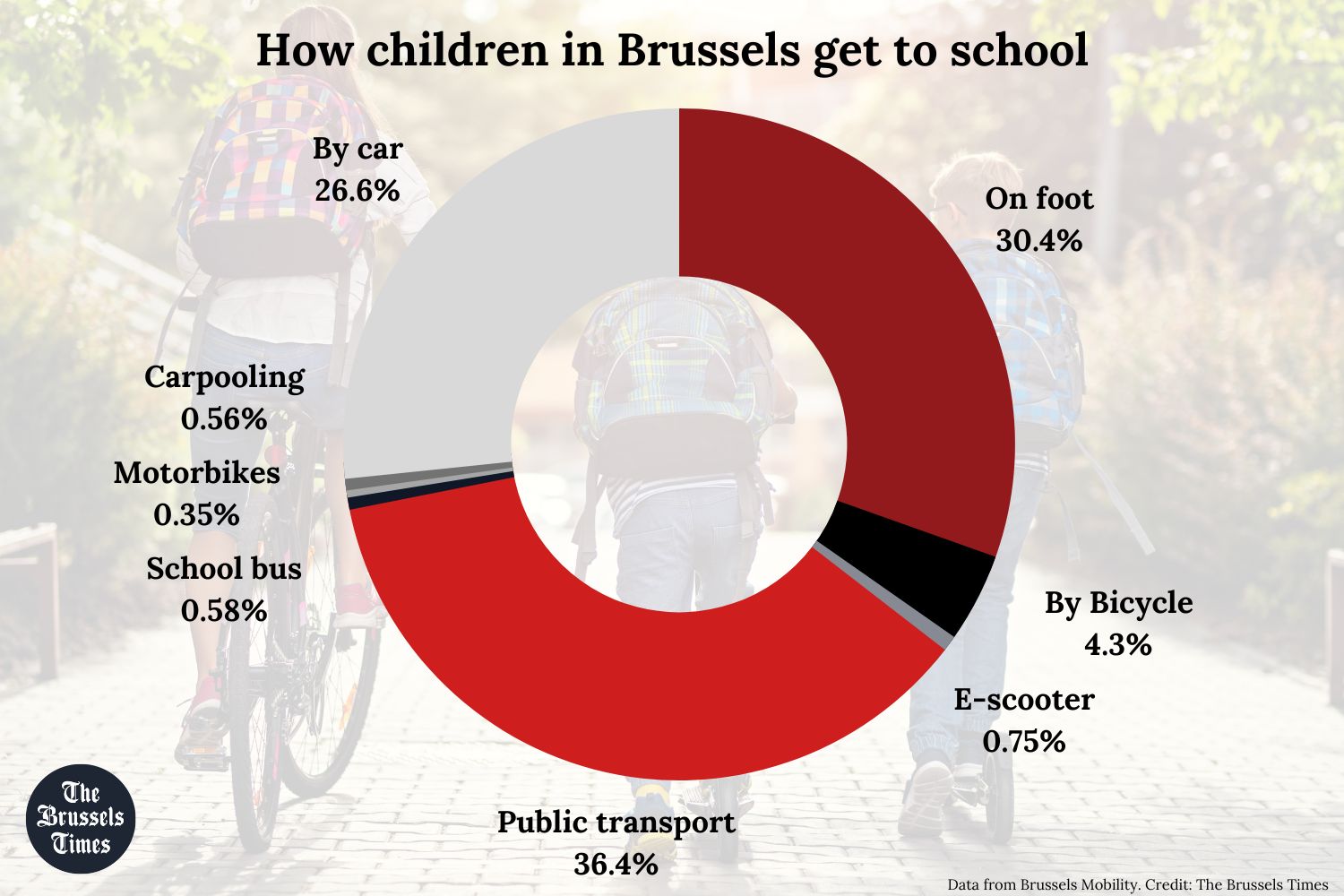Long gone are the days when lines of cars were waiting to drop children off in front of school gates or pupils would stream out of school buses. More and more students are opting for bicycles, e-scooters or their own two feet to get to their classes.
Compared to the pandemic-driven year 2020, Brussels Mobility has noted an increase in how often active modes of transport are used to get to school. Some 64% of pupils in primary education and 87% in secondary education come to school by means other than by car, a recent poll found.
Since the start of the analysis of modal shares in 2020, the use of cars has dropped by 2% and the reliance on the school bus to get to class has decreased by 1%. Among teachers, the use of cars has even slumped by 5%, while bicycles are rising in popularity.
"School transport is about more than just mobility: it is also an essential link for public health, air quality, road safety and quality of life," said Elke Van den Brandt, Brussels Minister for Mobility.
However, a study last year found that young people — specifically 12 and 16-year-olds — are most at risk of being involved in an accident on their way to school. At the age of 12, children often start going to school alone, while they are often not yet risk-averse, explaining the large number of accidents in this age group.
Meanwhile, at 16, many young people turn to other means of transport, in particular e-scooters, which increases the risk of an accident. The study confirmed that in Brussels, young pedestrians especially are at risk of being involved in a traffic accident on their way to school.
Therefore, schools are increasingly working on making pupils aware of traffic safety from a young age.
Teaching road safety from young age
One-third of schools in Brussels work in a structured way around active mobility and road safety with school transport plans, through which Brussels Mobility offers direct support to schools by making bicycle and e-scooter stands, as well as bicycle helmets available, and organising training sessions and activities around active transport modes.
On Thursday, schools, associations and partners in the region working around 'active mobility' are gathering at the School Mobility Fair to take stock of the trends in travel to and from Brussels schools and of the novelties that Brussels Mobility offers in the framework of school transport plans.
For example, to support preschool and primary school teachers who want to teach their pupils to walk and cycle in the city, Brussels Mobility has developed a specific learning programme. In the nursery classes of schools with a school transport plan, play mats painting a realistic picture of the city are used to teach young children about being safe in traffic.
Related News
- Schaerbeek to introduce cycle paths and green spaces in large redevelopment
- Belgian Mobility Minister wants harsher traffic speeding penalties
Schools or interested parents can also request to set up a so-called "school street," an initiative launched in 2019 allowing for an intervention in the public space near a school, aimed at facilitating safe access for pupils, staff and visitors.
"Raising awareness and educating pupils, parents and school staff about active travel, as well as making school environments safer, can have a positive knock-on effect. Parents feel more comfortable letting their children walk or cycle, allowing more children to go to school actively," Van den Brandt concluded.


